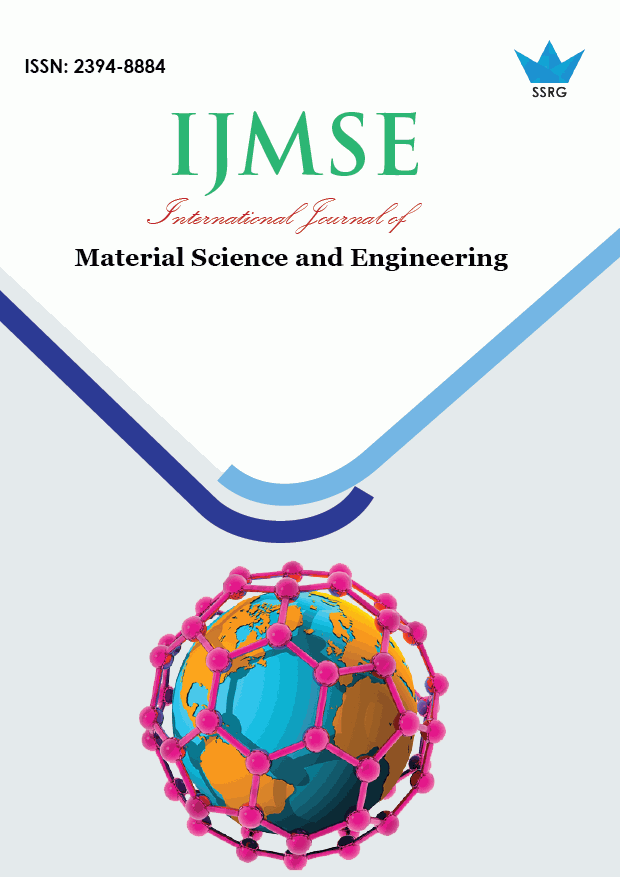Applicability of Modified Ritchie-Knott-Rice Failure Criterion to Predict the Occurrence of Cleavage Fracture under Residual Stress Field

| International Journal of Material Science and Engineering |
| © 2016 by SSRG - IJMSE Journal |
| Volume 2 Issue 2 |
| Year of Publication : 2016 |
| Authors : Kenichi Ishihara, Takeshi Hamada, and Toshiyuki Meshii |
How to Cite?
Kenichi Ishihara, Takeshi Hamada, and Toshiyuki Meshii, "Applicability of Modified Ritchie-Knott-Rice Failure Criterion to Predict the Occurrence of Cleavage Fracture under Residual Stress Field," SSRG International Journal of Material Science and Engineering, vol. 2, no. 2, pp. 1-6, 2016. Crossref, https://doi.org/10.14445/23948884/IJMSE-V2I4P101
Abstract:
This paper introduces our experience of applying the modified Ritchie-Knott-Rice (RKR) failure criterion (which predicts the occurrence of cleavage fracture when the mid-plane crack opening stress measured at four times the crack-tip opening displacement 22d exceeds a critical stress 22c) to the SE(B) specimen with a residual stress in the ductile to brittle transition temperature (DBTT) region. The fracture toughness test and elastic-plastic finite element analysis results are compared in this paper. 0.45 % carbon steel JIS S45C, whose tensile to yield stress ratio B/ YS was equal to 1.5 at fracture test temperature was considered in this study. Focus was placed on whether the modified RKR failure criterion can be applied to the test specimen with a compressive residual stress that was introduced by a mechanical preload at room temperature. SE(B) specimen of width W x thickness B of 46 x 23 mm were chosen. Results showed that the scatter of 22cs obtained from specimens with a compressive residual stress were small difference. In addition, the J corresponding to the load that 22d first reaches 22c seemed to predict the lower bound toughness for the material and the specified specimen configuration.
Keywords:
Modified Ritchie-Knott-Rice failure criterion, Fracture toughness, SE(B) specimen, Compressive residual stress.
References:
[1] F. M. Beremin, “Numerical modelling of warm prestress effect using damage function for cleavage fracture,” Proc. Conf. ICF 5, 5, pp 825-832, 1981.
[2] K. Wallin, “The Size Effect in KIC Results,” Engineering Fracture Mechanics, 22, pp. 149-163, 1985.
[3] R. H. Dodds, T. L. Anderson, and M. T. Kirk, “A Framework to Correlate a/W Ratio Effects on Elastic-Plastic Fracture Toughness (Jc),” International Journal of Fracture, 48, pp. 1- 22, 1991.
[4] M. Nevalainen, R. H. Dodds, “Numerical Investigation of 3- D Constraint Effects on Brittle Fracture in SE(B) and C(T) Specimens,” International Journal of Fracture, 74, pp. 131- 161, 1995.
[5] H. J. Rathbun, G. R. Odette, T. Yamamoto, M. Y. He, and G. E. Lucas, “Statistical and Constraint Loss Size Effects on Cleavage Fracture–Implications to Measuring Toughness in the Transition,” Journal of Pressure Vessel Technology, 128, pp. 305-313, 2005.
[6] J. H. Chen, G. Z. Wang, C. Yan, H. Ma, and L. Zhu, “Advances in the Mechanism of Cleavage Fracture of Low Alloy Steel at Low Temperature,” Part II: Fracture model, International Journal of Fracture, 83, pp. 121-138, 1997.
[7] K. Lu, T. Meshii, “Application of T33-Stress to Predict the Lower Bound Fracture Toughness for Increasing the Test Specimen Thickness in the Transition Temperature Region,” Advances in Materials Science and Engineering, pp. 1-8, 2014.
[8] T. Meshii, K. Lu, and Y. Fujiwara, “Extended Investigation of the Test Specimen Thickness (TST) Effect on the Fracture Toughness (Jc) of a Material in the Ductile-to-Brittle Transition Temperature Region as a Difference in the Crack Tip Constraint − What Is the Loss of Constraint in the TST Effects on Jc?,” Engineering Fracture Mechanics, 135, pp. 286-294, 2015.
[9] T. Meshii, T. Yamaguchi, and Y. Higashino, “Applicability of the Modified Ritchie-Knott-Rice Failure Criterion to Examine the Feasibility of Miniaturized Charpy Type SE(B) Specimens,” Advances in Materials Science and Engineering, (submitted), 2016.
[10] T. Meshii, K. Lu, and R. Takamura, “A Failure Criterion to Explain the Test Specimen Thickness Effect on Fracture Toughness in the Transition Temperature Region,” Engineering Fracture Mechanics, 104, pp. 184-197, 2013.
[11] T. Meshii, T. Yamaguchi, “Applicability of the Modified Ritchie-Knott-Rice Failure Criterion to Transfer of Fracture Toughness Jc of Reactor Pressure Vessel Steel Using Specimens of Different Thicknesses-Possibility of Deterministic Approach to Transfer the Minimum Jc for Specified Specimen Thicknesses,” Theoretical and Applied Fracture Mechanics, (in press, http://dx.doi.org/10.1016/j.tafmec.2016.04.002), 2016.
[12] ASTM, “E1921-10 Standard Test Method for Determination of Reference Temperature, To, for Ferritic Steels in the Transition Range,” Annual Book of ASTM Standards, American Society for Testing and Materials, Philadelphia PA., 2010.
[13] ASTM, “E1820-06a Standard Test Method for Measurement of Fracture Toughness,” Annual Book of ASTM Standards, American Society for Testing and Materials, Philadelphia PA., 2006.
[14] Abaqus version 6.14, “Abaqus Analysis User’s Manual,” Dassault Systemes Simulia Corp., USA., 2014.

 10.14445/23948884/IJMSE-V2I4P101
10.14445/23948884/IJMSE-V2I4P101